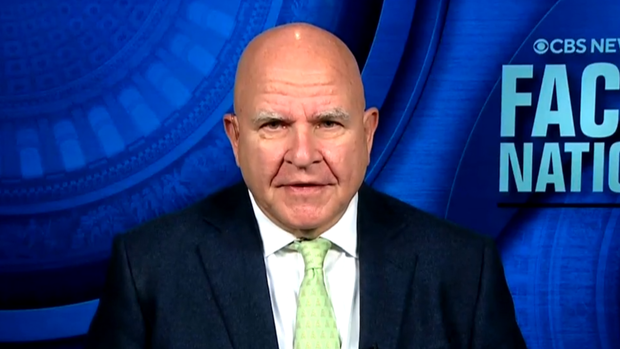CBS News
Converting vacant office buildings into apartments | 60 Minutes

Not long ago, the building at 160 Water Street in New York City’s Financial District was a quintessential Manhattan office. Built in the 1970s, it housed the New York City Health and Hospitals Corporation and some back-office functions for Beth Israel Medical Center. Each of its 24 stories was lined with perimeter offices, while the interior of the floors was filled in with cubicles and the employees who toiled inside them.
Today, it is Pearl House, a new apartment building flush with upscale amenities and boasting nearly 600 new homes for New Yorkers willing to sleep where workers once filed paper, made coffee and unjammed the copy machine.
The building at 160 Water Street is also an example of a growing trend in real estate — urban housing converted from unused office space. And post-pandemic, there is certainly no shortage of vacant space: In Manhattan, nearly 18% of offices are sitting empty as of November, according to real-estate firm Colliers. That is the equivalent of the equivalent of 30 Empire State Buildings.
Alongside the crisis of vacant offices is that of urban housing shortages in a market where costs are often prohibitively expensive. But addressing these two real-estate disasters with one solution — simply turning office space into housing — is not as easy as changing the plumbing and adding a few walls.
The obstacles of converting offices to housing
Real estate firms are reusing existing structures rather than tearing them down and rebuilding on the site, in part, because repurposing buildings is significantly better for than environment.
Global sustainable-development firm Arup released a report last month showing that, if about 220 New York City office buildings were converted to housing, they could produce 54% less carbon emissions by 2050. The savings come from the lesser carbon footprint of renovation instead of new construction, along with maximizing the efficiency of the office buildings’ current energy use.
But only around 10%-15% of office buildings nationwide can realistically be transformed to housing, according to economist Stijn Van Nieuwerburgh, a professor of real estate at New York’s Columbia Business School. That is, in part, because so many office buildings constructed in the last 50 years have such enormous footprints.
While junior and midlevel employees may not have minded relying on the harsh glow of fluorescent lights to illuminate their cubicles, homes require light and air in their interior. Other engineering obstacles include the need for sufficient plumbing and functional windows.
“None of this is cheap, but a lot of it is doable,” Van Nieuwerburgh said.
At 160 Water Street, the Vanbarton Group has owned the building since 2014. To transform it into the 588 units of Pearl House, the developers took out a $273 million loan for construction, according to its managing director Joey Chilelli.
Rent at Pearl House ranges from about $3,500 for a studio apartment to $7,500 for a two-bedroom.
“We’re not talking about creating affordable housing,” Van Nieuwerburgh said. “If you want to create affordable housing then rents are naturally going to be lower. And so the math typically does not work out anymore.”
Enticing new residents
So what does a converted building have to do to attract tenants? How can they entice people to pay top dollar to live, for example, in a converted 1970s building in the financial district? At 160 Water Street, they are banking on amenities — and lots of them.
Some are what might be expected from an upscale apartment building. According to Chilelli, there will be lounges, bowling, and a spa with a hot tub, cold plunge, steam room, and hyperbaric oxygen chamber. A private outdoor area will include gas firepits, water fountains, and sun loungers, and inside, there will be two sportsbooks with a giant video wall (though no sanctioned betting on site).
The role of working from home also factored into the design, with home offices and Zoom rooms on the roof deck. Because some of the amenities are designed to make working from home accessible, the building, in a way, accelerates the trend of remote work that helped drive out the employees who once worked within its four walls.
“There’s definitely a dynamic shift that’s been out there,” Chilelli said. “And whether it’s one or two days a week when people are working from home, we want them to be able to find a space outside of their unit and to be able to enjoy that space or even invite co-workers over for that collaborative time in this building.”
The future of cities
This shift to hybrid work has created an inflection point for cities across the country as they struggle to figure out what to do with buildings left vacant by workers who seldom come into the office. Those vacant offices could currently be repurposed into 400,000 new apartments, according to a working paper by Van Nieuwerburgh and his colleagues Arpit Gupta and Candy Martinez.
In New York City, Mayor Eric Adams estimates that zoning changes he has proposed could create thousands of additional apartments. The zoning changes, called “City of Yes for Housing Opportunity,” would allow office buildings constructed before 1990 to be converted to housing. The current cut-off is 1961 or 1977, depending on the neighborhood. If the state government approves the revised regulations, the city estimates this change could create up to 20,000 new homes for as many as 40,000 residents.
In San Francisco, where the office vacancy rate hit 35.6% in the fourth quarter of 2023, officials are also taking measures to streamline building codes and reduce the fees of converting offices to residences. In the nation’s capital, D.C. Mayor Muriel Bowser wants to incentivize office-to-apartment conversions with a tax-relief program.
For Van Nieuwerburgh, converting offices to residences offers a chance to redefine what cities are and reconceive of how they use space.
“It is an opportunity,” Van Nieuwerburgh said. “Cities have always reinvented themselves as long as they have existed, and this is a moment of transformation.”
The video above was produced by Brit McCandless Farmer and edited by Sarah Shafer Prediger.
CBS News
Former Israeli hostages released in truce 1 year ago call for action to release those still held

Former Israeli hostages who were freed from Hamas captivity during a week-long humanitarian pause in fighting exactly one year ago Sunday called for immediate action to secure a deal for the release of those still held.
The only truce in the ongoing Israel-Hamas war on Nov. 24, 2023 – fewer than two months after fighting began – led to the release of 80 Israelis held by militants in Gaza. They were freed in exchange for 240 Palestinians detained in Israeli jails.
Repeated efforts since then by mediators from Qatar, Egypt and the United States to secure another truce and hostage release have failed. Qatar early this month said it was suspending its mediation role until the warring sides show “seriousness.”
Mostafa Alkharouf/Anadolu via Getty Images
Gabriella Leimberg was kidnapped during the Oct. 7, 2023, Hamas attack and was released along with her daughter, Mia, and sister Clara.
“For 53 days, the one thing that kept me going is that we, the people of Israel, the Jewish people, sanctify life — we don’t leave anyone behind,” she said.
Leimberg added: “Everything has already been said and now action is required. We don’t have any more time.”
Around 100 hostages are still in Gaza, and at least a third are believed to be dead.
“I survived and I was fortunate to get my entire family back,” Leimberg said. “I want and demand this for all the families of the hostages.”
Hamas wants Israel to end the war and withdraw all troops from Gaza. Israel has offered only to pause its offensive.
The Palestinian death toll from the war surpassed 44,000 this week, according to Gaza’s Health Ministry, which does not distinguish between civilians and combatants in its count.
Maya Alleruzzo / AP
Danielle Aloni, who was kidnapped with her five-year-old daughter, Emelia, and freed after 49 days, spoke at the ceremony of the “increasing danger” those still being held face every day.
She said those still in captivity “suffer physical, sexual, and psychological abuse, their identity and dignity crushed anew each day”.
“It took the Israeli government about two months to secure a deal for me and 80 other Israeli hostages. Why is it taking over a year to reach another deal to free them from this hell?” asked Aloni, whose brother-in-law, David Cunio, and his brother, Ariel Cunio, are still being held.
She emphasized that, even though she and the other hostages gained their freedom a year ago, “we haven’t really left the tunnels,” — referring to Hamas’ underground tunnels where many of the hostages were held.
“The feeling of suffocation, the terrible humidity, the stench — these sensations still envelop us,” Aloni said.
“If people could truly understand what it means to be held in subhuman conditions in tunnels, surrounded by terrorists for 54 days — there’s no way they would allow hostages to remain there for 415 days!” said Raz Ben Ami, who was released in the deal a year ago.
Her husband, Ohad, is still among those being held.
Ben Ami called for a ceasefire to “bring back all the hostages as quickly as possible”.
CBS News
Couple charged for allegedly stealing $1 million from Lululemon in convoluted retail theft scheme

A couple from Connecticut faces charges for allegedly taking part in an intricate retail theft operation targeting the apparel company Lululemon that may have amounted to $1 million worth of stolen items, according to a criminal complaint.
The couple, Jadion Anthony Richards, 44, and Akwele Nickeisha Lawes-Richards, 45, were arrested Nov. 14 in Woodbury, Minnesota, a suburb of Minneapolis-St. Paul. Richards and Lawes-Richards have been charged with one count each of organized retail theft, which is a felony, the Ramsey County Attorney’s Office said. They are from Danbury, Connecticut.
The alleged operation impacted Lululemon stores in multiple states, including Minnesota.
“Because of the outstanding work of the Roseville Police investigators — including their new Retail Crime Unit — as well as other law enforcement agencies, these individuals accused of this massive retail theft operation have been caught,” a spokesperson for the attorney’s office said in a statement on Nov. 18. “We will do everything in our power to hold these defendants accountable and continue to work with our law enforcement partners and retail merchants to put a stop to retail theft in our community.”
Both Richards and Lawes-Richards have posted bond as of Sunday and agreed to the terms of a court-ordered conditional release, according to the county attorney. For Richards, the court had set bail at $100,000 with conditional release, including weekly check-ins, or $600,000 with unconditional release. For Lawes-Richards, bail was set at $30,000 with conditional release and weekly check-ins or $200,000 with unconditional release. They are scheduled to appear again in court Dec. 16.
Prosecutors had asked for $1 million bond to be placed on each half of the couple, the attorney’s office said.
Richards and Lawes-Richards are accused by authorities of orchestrating a convoluted retail theft scheme that dates back to at least September. Their joint arrests came one day after the couple allegedly set off store alarms while trying to leave a Lululemon in Roseville, Minnesota, and an organized retail crime investigator, identified in charging documents by the initials R.P., recognized them.
The couple were allowed to leave the Roseville store. But the investigator later told an officer who responded to the incident that Richards and Lawes-Richards were seasoned shoplifters, who apparently stole close to $5,000 worth of Lululemon items just that day and were potentially “responsible for hundreds of thousands of dollars in loss to the store across the country,” according to the complaint. That number was eventually estimated by an investigator for the brand to be even higher, with the criminal complaint placing it at as much as $1 million.
Richards and Lawes-Richards allegedly involved other individuals in their shoplifting pursuits, but none were identified by name in the complaint. Authorities said they were able to successfully pull off the thefts by distracting store employees and later committing fraudulent returns with the stolen items at different Lululemon stores.
“Between October 29, 2024 and October 30, 2024, RP documented eight theft incidents in Colorado involving Richards and Lawes-Richards and an unidentified woman,” authorities wrote in the complaint, describing an example of how the operation would allegedly unfold.
“The group worked together using specific organized retail crime tactics such as blocking and distraction of associates to commit large thefts,” the complaint said. “They selected coats and jackets and held them up as if they were looking at them in a manner that blocked the view of staff and other guests while they selected and concealed items. They removed security sensors using a tool of some sort at multiple stores.”
CBS News contacted Lululemon for comment but did not receive an immediate reply.
CBS News
Former Trump national security adviser says next couple months are “really critical” for Ukraine

Washington — Lt. Gen. H.R. McMaster, a former national security adviser to Donald Trump, said Sunday that the upcoming months will be “really critical” in determining the “next phase” of the war in Ukraine as the president-elect is expected to work to force a negotiated settlement when he enters office.
McMaster, a CBS News contributor, said on “Face the Nation with Margaret Brennan” that Russia and Ukraine are both incentivized to make “as many gains on the battlefield as they can before the new Trump administration comes in” as the two countries seek leverage in negotiations.
With an eye toward strengthening Ukraine’s standing before President-elect Donald Trump returns to office in the new year, the Biden administration agreed in recent days to provide anti-personnel land mines for use, while lifting restrictions on Ukraine’s use of U.S.-made longer range missiles to strike within Russian territory. The moves come as Ukraine marked more than 1,000 days since Russia’s invasion in February 2022.
Meanwhile, many of Trump’s key selection for top posts in his administration — Rep. Mike Waltz for national security adviser and Sens. Marco Rubio for secretary of state and JD Vance for Vice President — haven’t been supportive of providing continued assistance to Ukraine, or have advocated for a negotiated end to the war.
CBS News
McMaster said the dynamic is “a real problem” and delivers a “psychological blow to the Ukrainians.”
“Ukrainians are struggling to generate the manpower that they need and to sustain their defensive efforts, and it’s important that they get the weapons they need and the training that they need, but also they have to have the confidence that they can prevail,” he said. “And any sort of messages that we might reduce our aid are quite damaging to them from a moral perspective.”
McMaster said he’s hopeful that Trump’s picks, and the president-elect himself, will “begin to see the quite obvious connections between the war in Ukraine and this axis of aggressors that are doing everything they can to tear down the existing international order.” He cited the North Korean soldiers fighting on European soil in the first major war in Europe since World War II, the efforts China is taking to “sustain Russia’s war-making machine,” and the drones and missiles Iran has provided as part of the broader picture.
“So I think what’s happened is so many people have taken such a myopic view of Ukraine, and they’ve misunderstood Putin’s intentions and how consequential the war is to our interests across the world,” McMaster said.
On Trump’s selections for top national security and defense posts, McMaster stressed the importance of the Senate’s advice and consent role in making sure “the best people are in those positions.”
McMaster outlined that based on his experience, Trump listens to advice and learns from those around him. And he argued that the nominees for director of national intelligence and defense secretary should be asked key questions like how they will “reconcile peace through strength,” and what they think “motivates, drives and constrains” Russian President Vladimir Putin.
Trump has tapped former Rep. Tulsi Gabbard to be director of national intelligence, who has been criticized for her views on Russia and other U.S. adversaries. McMaster said Sunday that Gabbard has a “fundamental misunderstanding” about what motivates Putin.
More broadly, McMaster said he “can’t understand” the Republicans who “tend to parrot Vladimir Putin’s talking points,” saying “they’ve got to disabuse themselves of this strange affection for Vladimir Putin.”
Meanwhile, when asked about Trump’s recent selection of Sebastian Gorka as senior director for counterterrorism and deputy assistant to the president, McMaster said he doesn’t think Gorka is a good person to advise the president-elect on national security. But he noted that “the president, others who are working with him, will probably determine that pretty quickly.”













